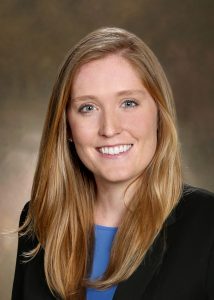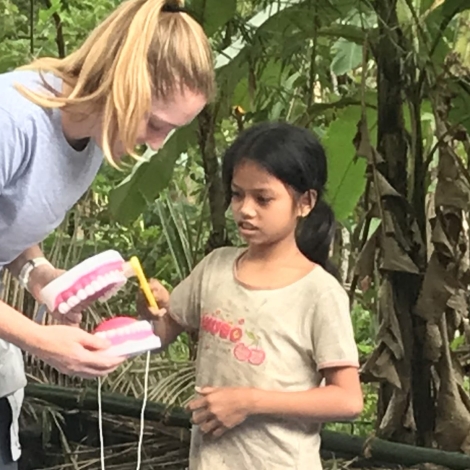 Austin Alexander oversees efforts to increase diversity, equity, and inclusion at Xylem in her role as Vice President of Sustainability and Social Impact at the global water technology company.
Austin Alexander oversees efforts to increase diversity, equity, and inclusion at Xylem in her role as Vice President of Sustainability and Social Impact at the global water technology company.
Since she joined Xylem in 2013, Ms. Alexander has worked in customer service, sales engineering, and investor relations. And while her titles were changing over the years, she was volunteering with Watermark, Xylem’s corporate citizenship program. Watermark provides access to water and education about water issues in communities around the world.
Before joining Xylem, Ms. Alexander held what sounds like one of the most fun jobs outdoors in the United States—a range technician for the US Forest Service, working out of Big Timber, Montana. E4C was honored to introduce Ms. Alexander as the keynote speaker at Impact.Engineered 2021. We asked Austin Alexander five questions.
E4C: Xylem prioritizes clean waterways as a sustainability goal. What is the company doing to meet it?
AA: At Xylem, water is what we do. Our products and technology are focused on helping utility and industrial customers to efficiently use our most precious resource, water, and to safely return to the environment. Therefore, our sustainability and business strategies are completely linked. As part of our 2025 Sustainability goals, we set out to put targets to hold ourselves accountable to, based on the impact our products and services. For example, we have a goal to prevent polluted water in the form of combined sewer overflows from entering waterways. We achieve this, in partnership with our utility customers, by providing leading digital solutions and reliable de-watering pumps.
E4C: You live in Montana, a state in the midst of a two-decade drought. With your perspective on water usage and sustainability, how worried are you about the future of water access in your state? And in and other places around the world?
AA: I am extremely fortunate to have the opportunity to move back to my home state of Montana in 2020. What I love about this state is our extraordinary and beautiful landscape, rich tie to the land through agriculture and pristine waterways. Like so many states in the Western U.S., the ongoing drought and associated rise in wildfires is concerning and threatens all those wonderful benefits of living here. It is my perspective that we must stop considering water resources an unending renewable source, both through more efficient use and protection. Globally, I believe we are entering a mind shift in the way we think about and value water. Our challenge will be to find a way to do this in a way that is equitable to all populations, including those most underserved already facing the greatest water challenges.
E4C: Rising populations and changing weather patterns are reducing water supplies and access in places all around the world. What gives you hope that those problems might be solved?
AA: I’m most hopeful that we will find a way to solve these challenges, simply because we must. As we know, life cannot be sustained without reliable, safe drinking water and sanitation. While the COVID-19 pandemic brought many horrendous consequences, it also did two great things for the water sector: 1) We have been reminded how critical access to WASH is to prevent the spread of disease and maintaining healthy, robust communities and 2) it showed how we can come together and innovate under great challenges. I think this bodes well for the next few years of innovation and investment in WASH and environmental protection.
E4C: How important is technological innovation to solving problems of water access and sustainability? Any examples of tech that seems promising?
AA: We are seeing a significant rise in the digitization of water across the globe. This includes remote and real-time monitoring and decision intelligence across water bodies, drinking water distribution, and sewage and stormwater collection and treatment. What this allows us to do is make smarter, data-driven decisions about how we effectively use our existing infrastructure, utilize capital investment smarter, and monitor assets real time. What this allows us as a sector is make smarter investments and do so in a way that is more equitable distributed and with minimal environmental footprint.
E4C: Some experts are skeptical that we will meet the SDGs by 2030. Do you believe we will meet Goal 6?
AA: I am, admittedly, concerned. The trend lines to close the gap on SDG 6 are quite steep, and the growing impacts of climate change are making the goal of expanded access to clean water and sanitation even more challenging. That said, I remain hopeful. One of the most wonderful things about my role at Xylem is I have the opportunity to meet with NGOs, start-ups and other innovators across the sector working tirelessly at this goal. And doing so in a way that is mindful of environmental and social impacts their solutions can have. I wholeheartedly believe it is still within reach with the combined efforts and investment of all of us.

